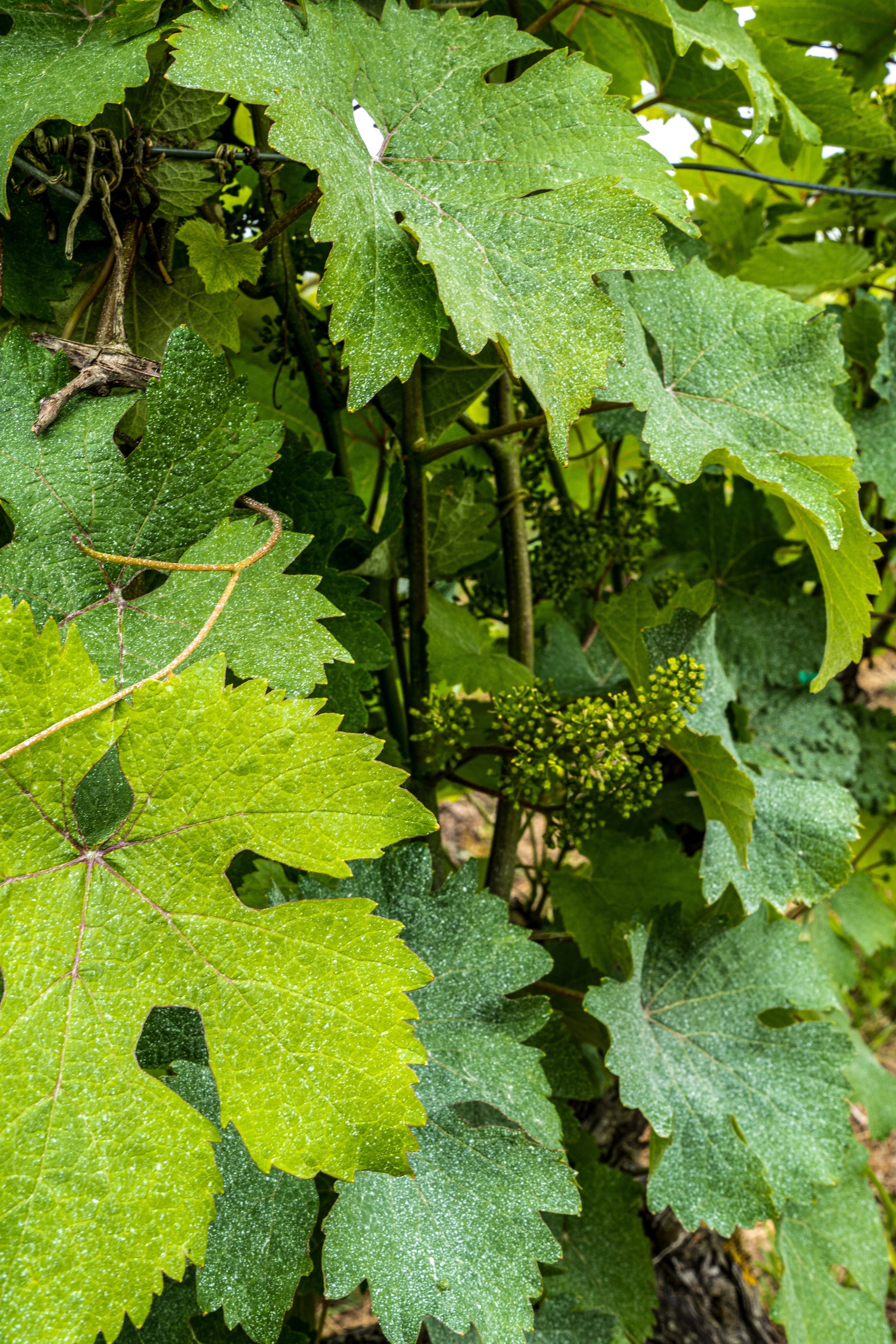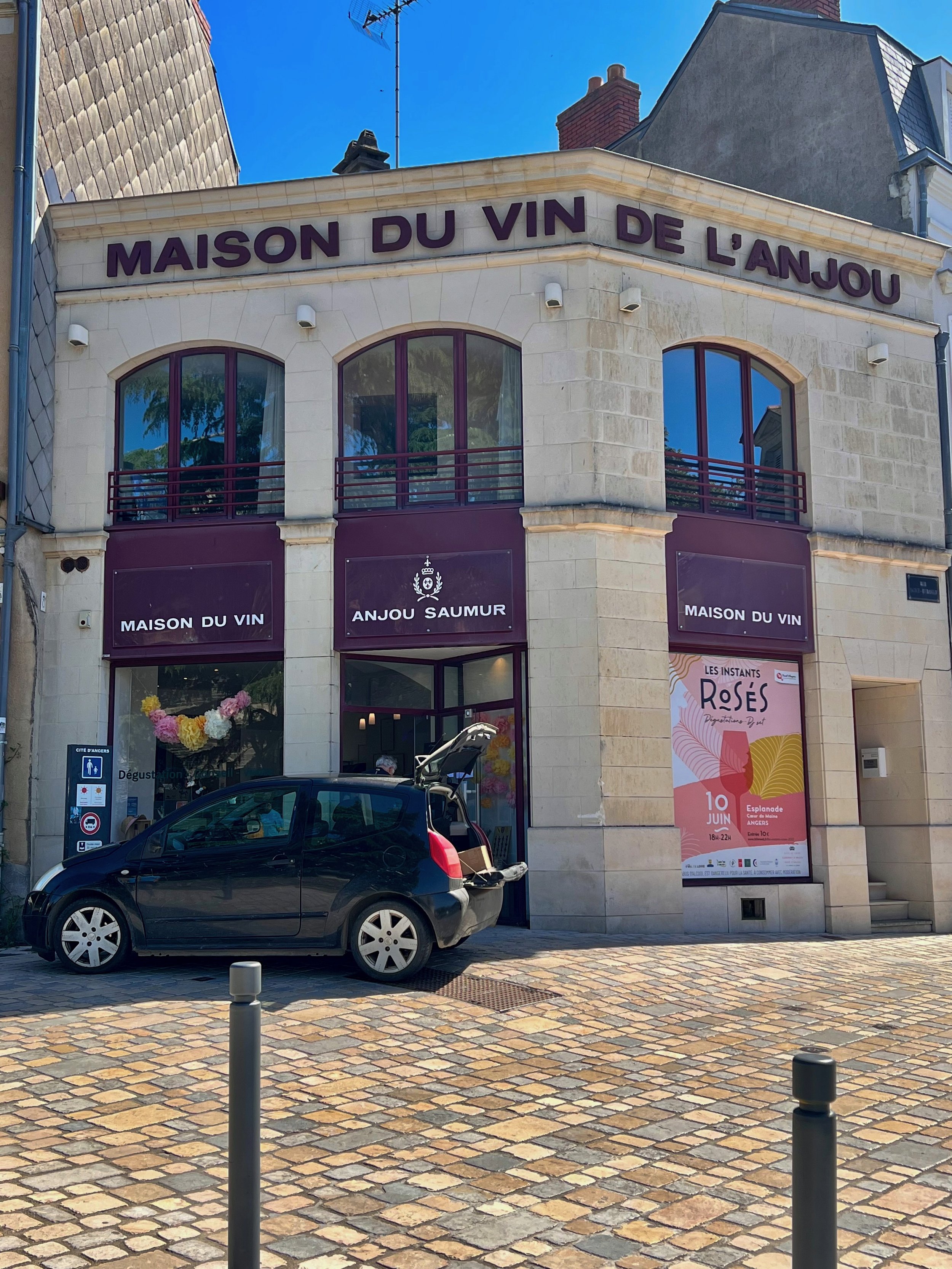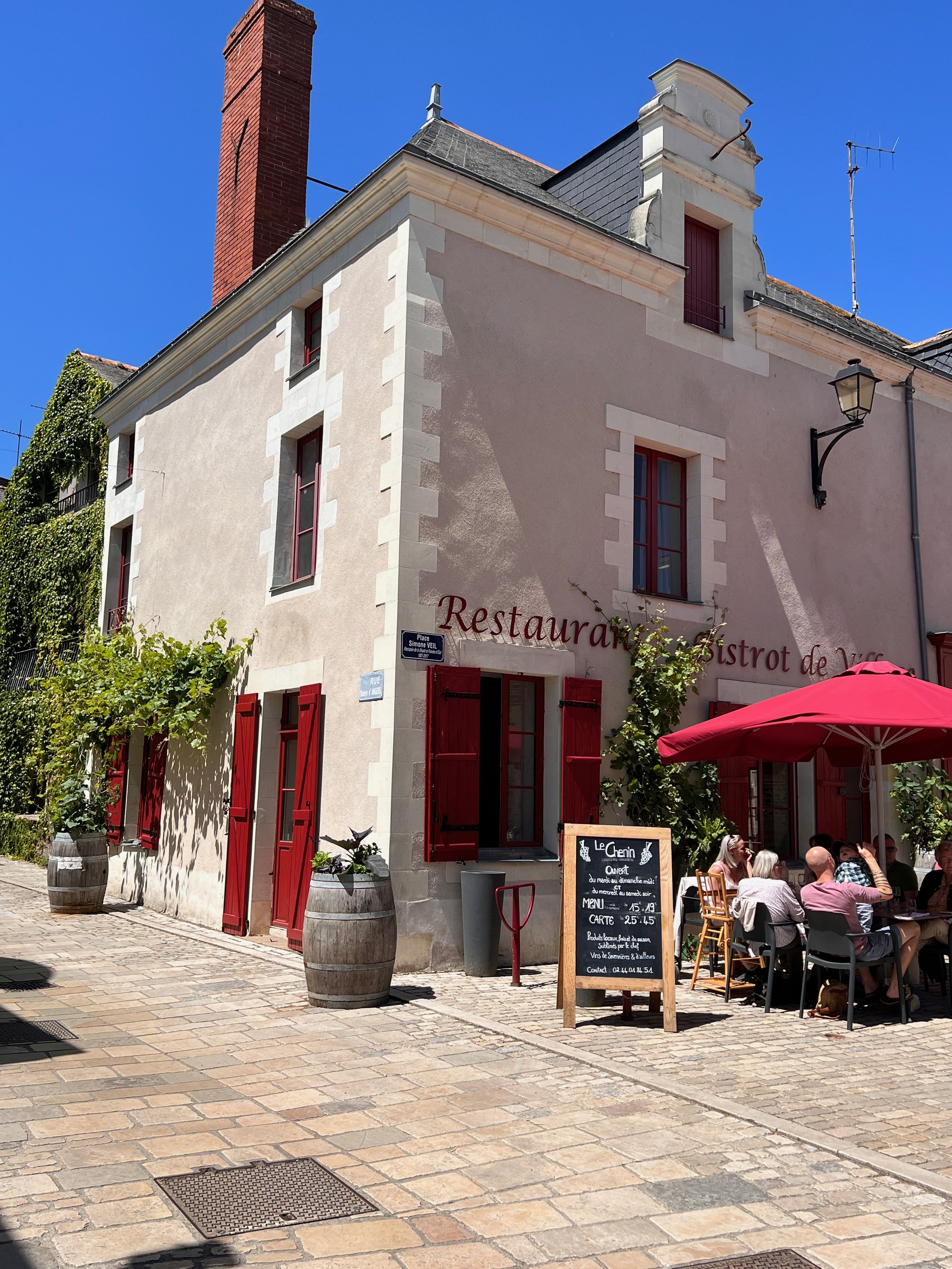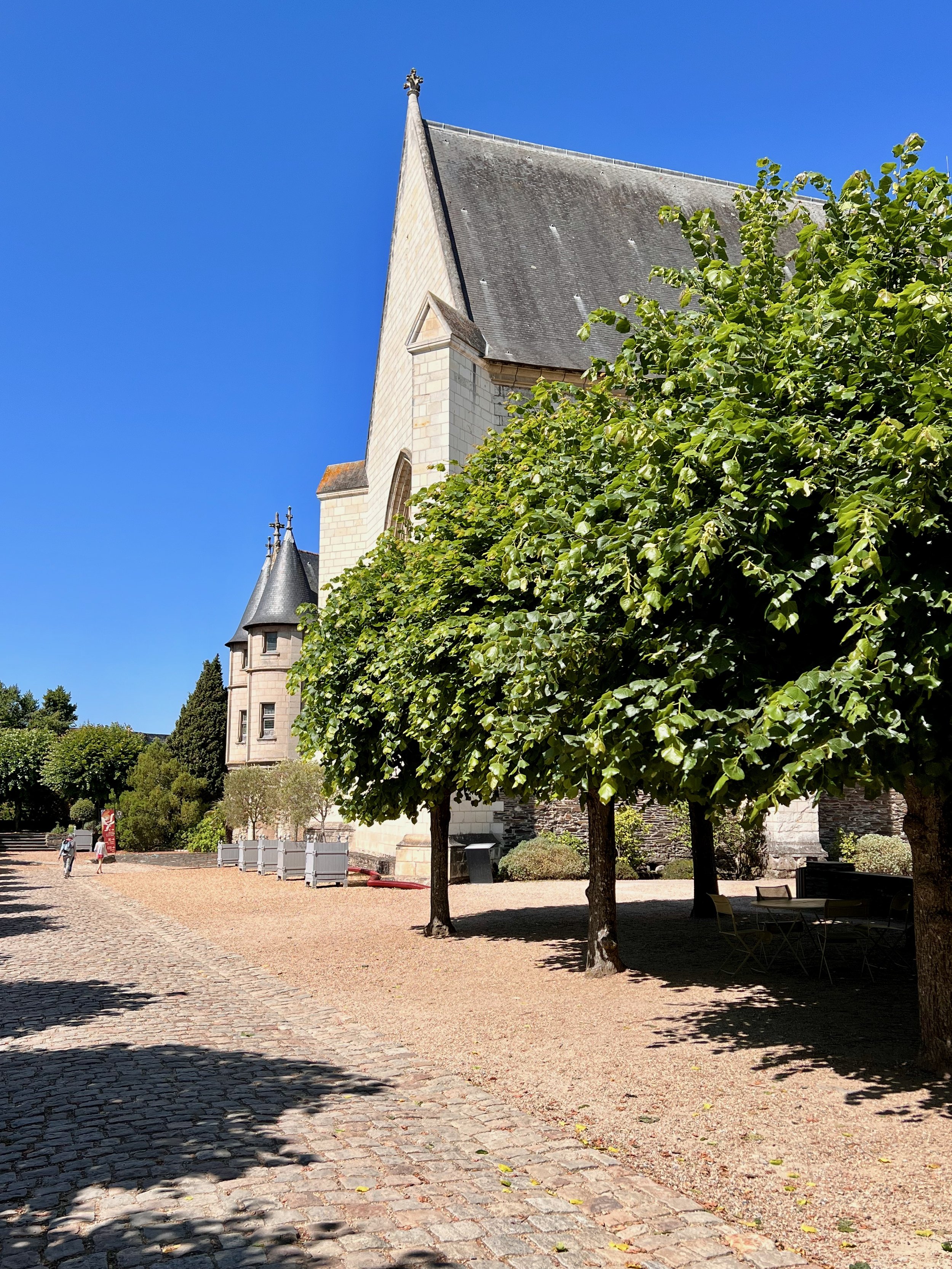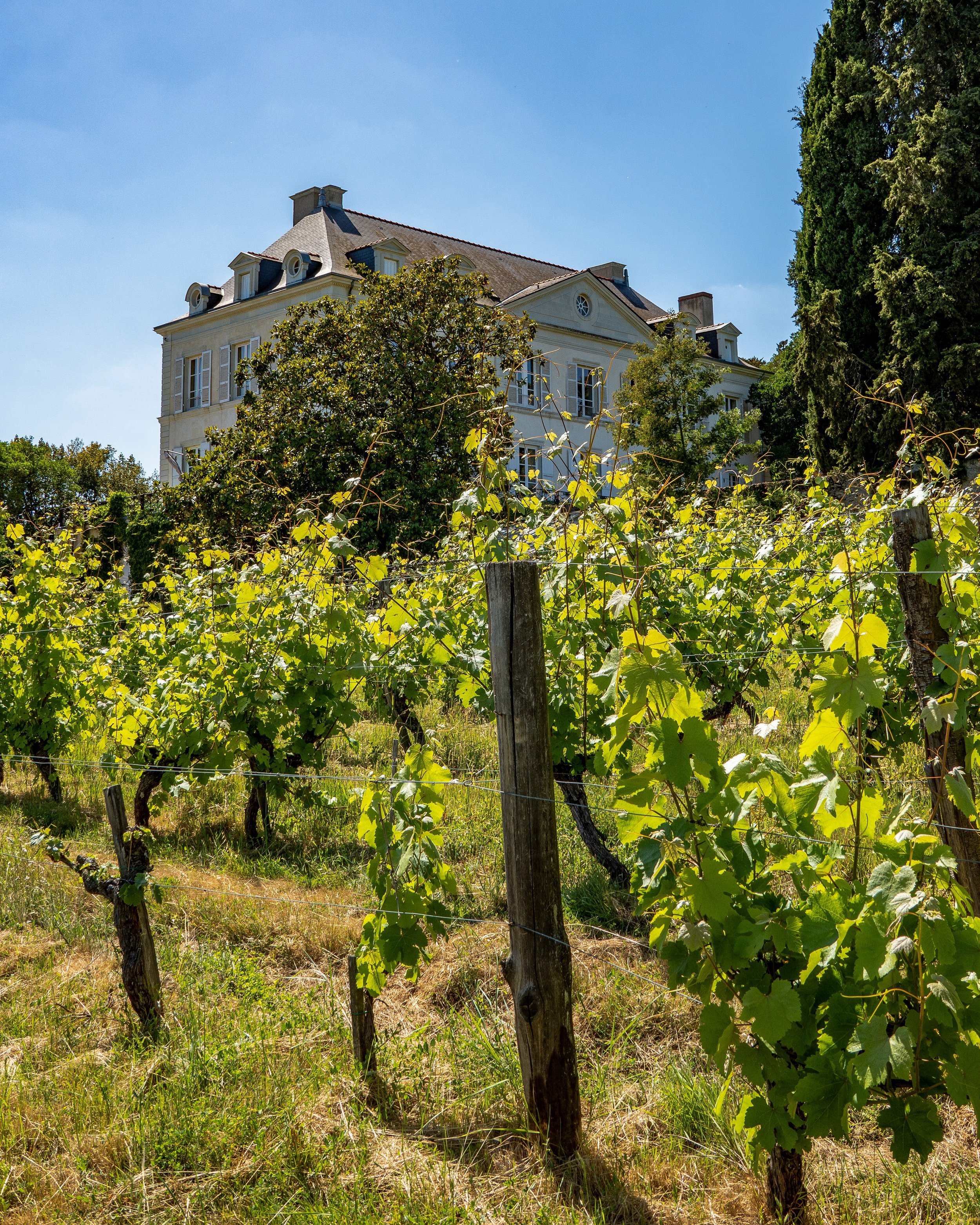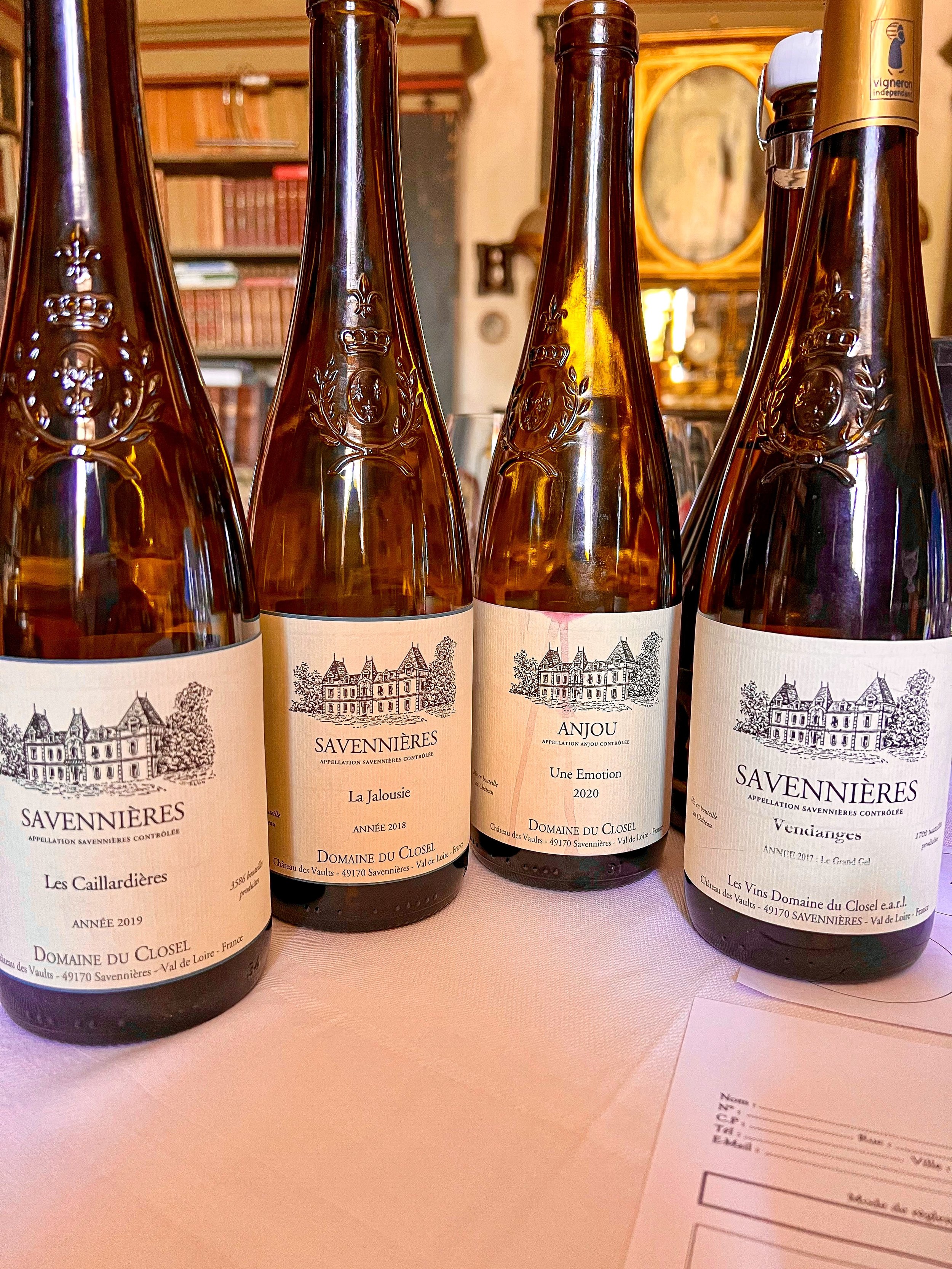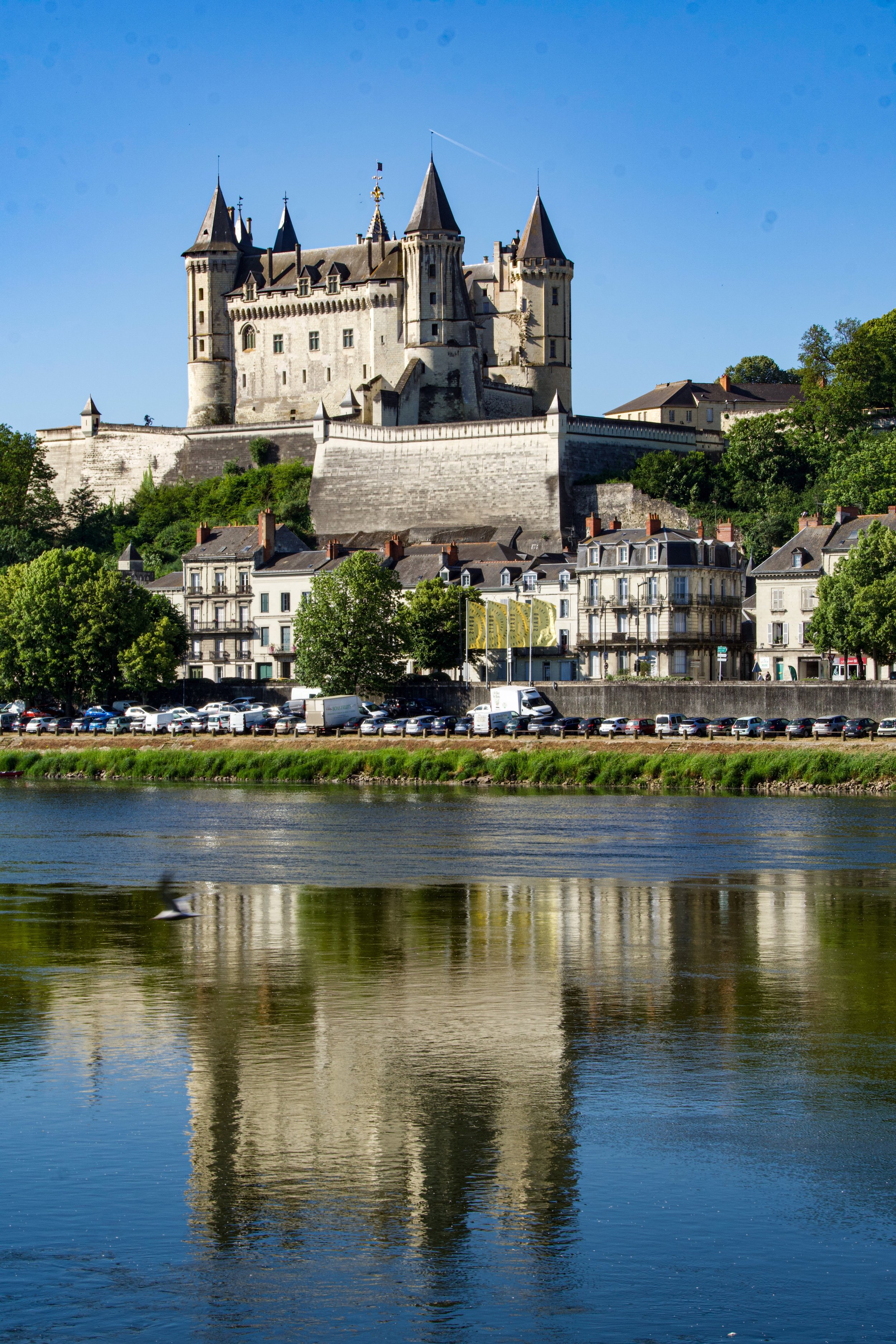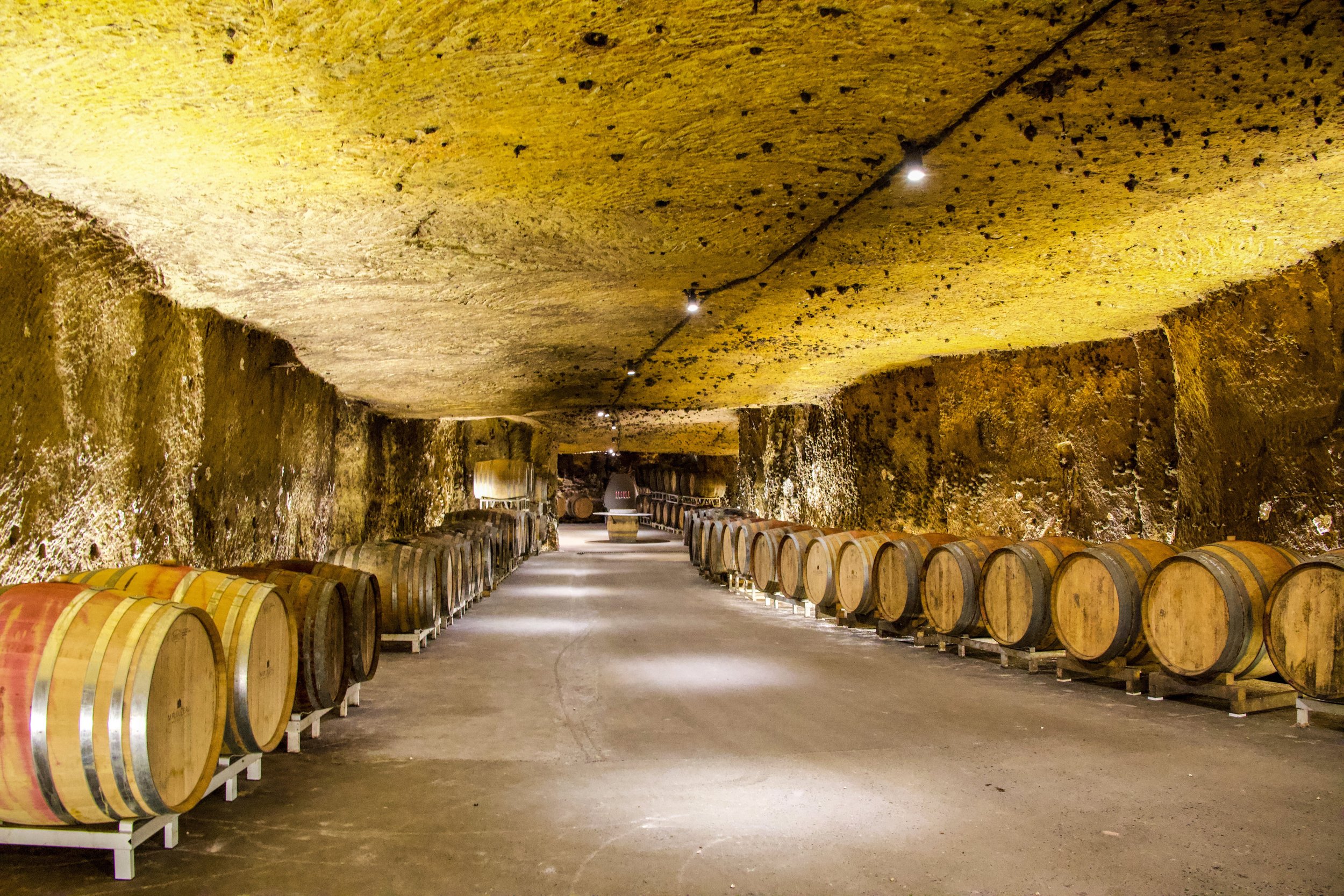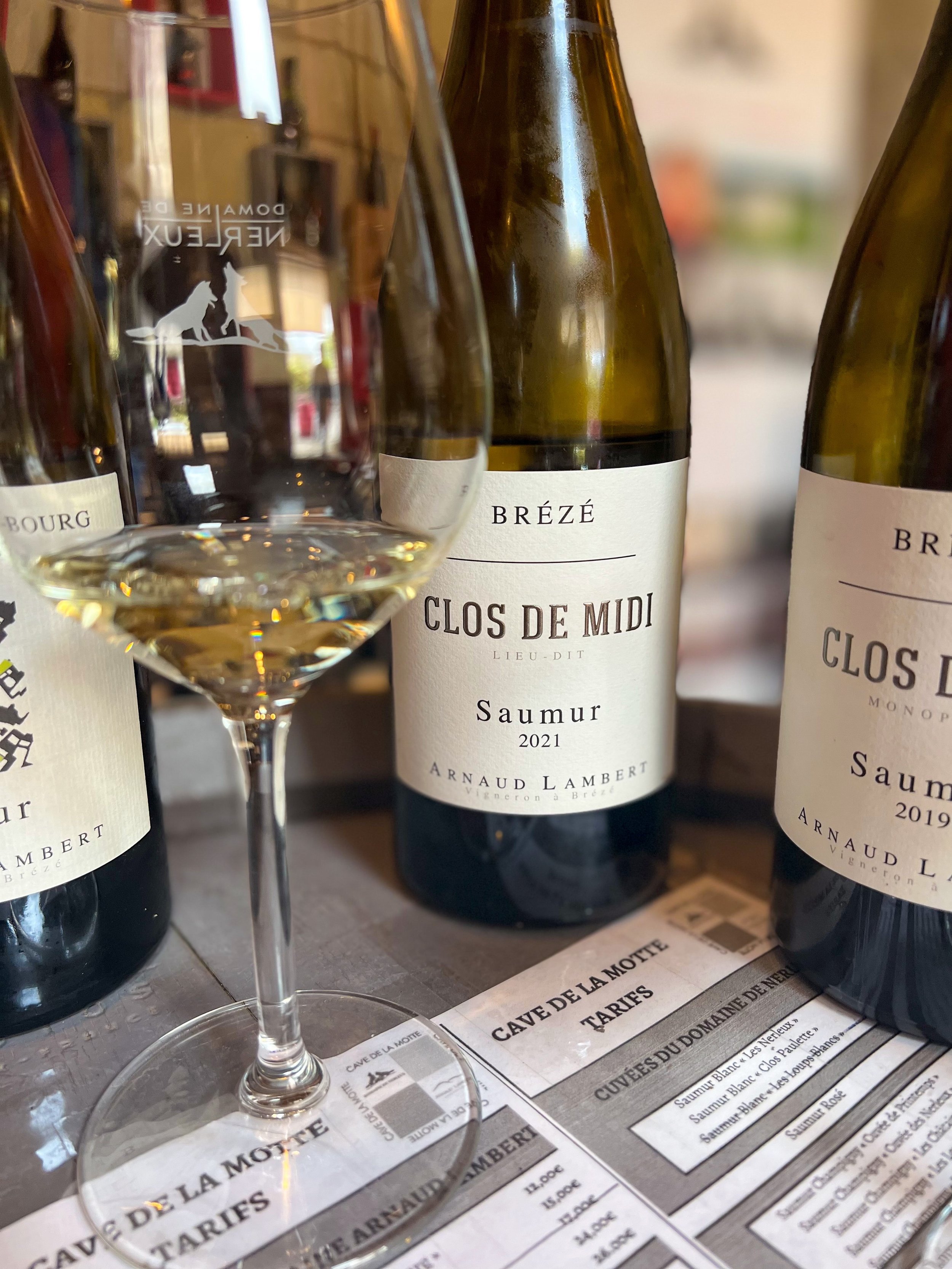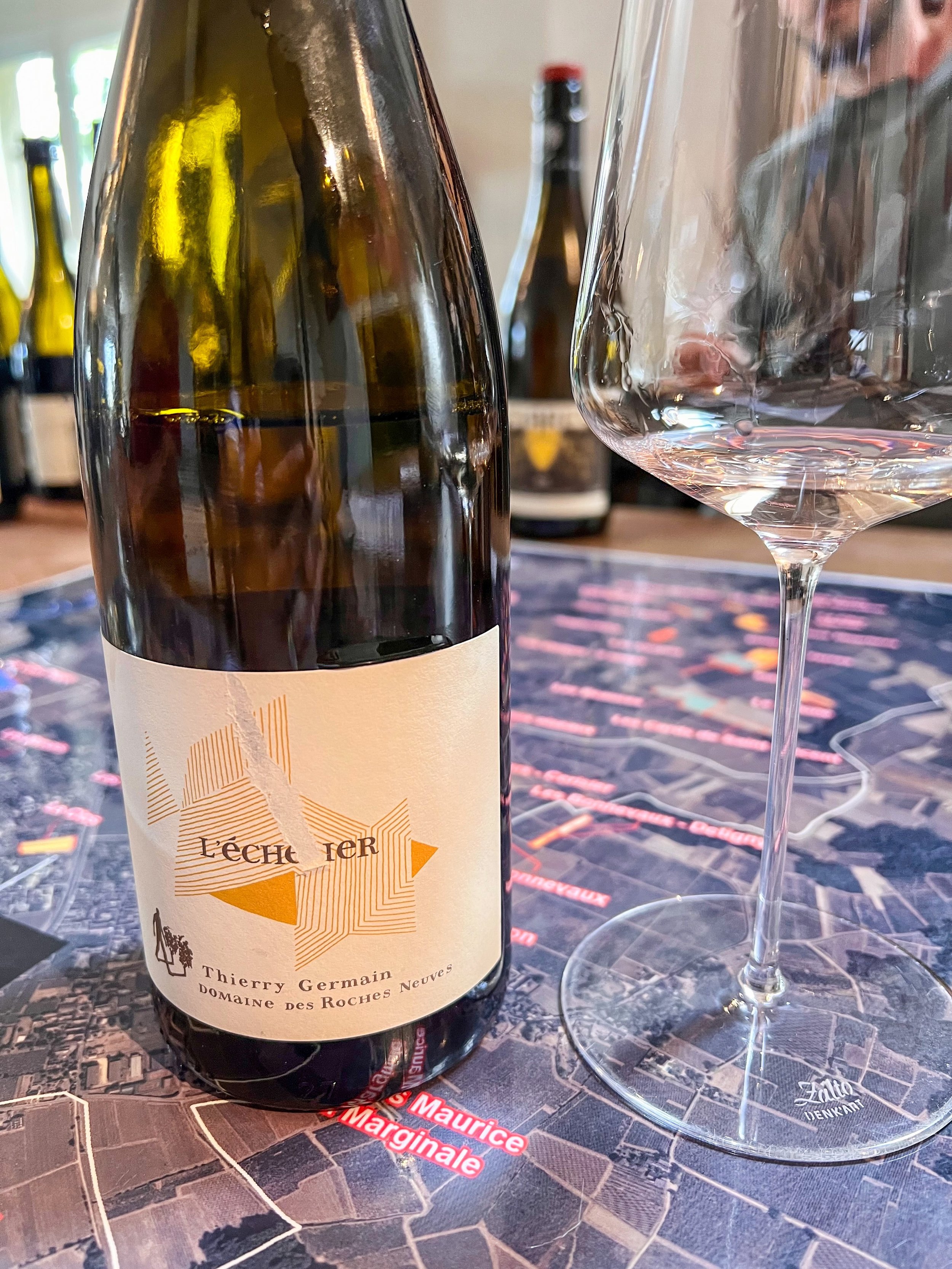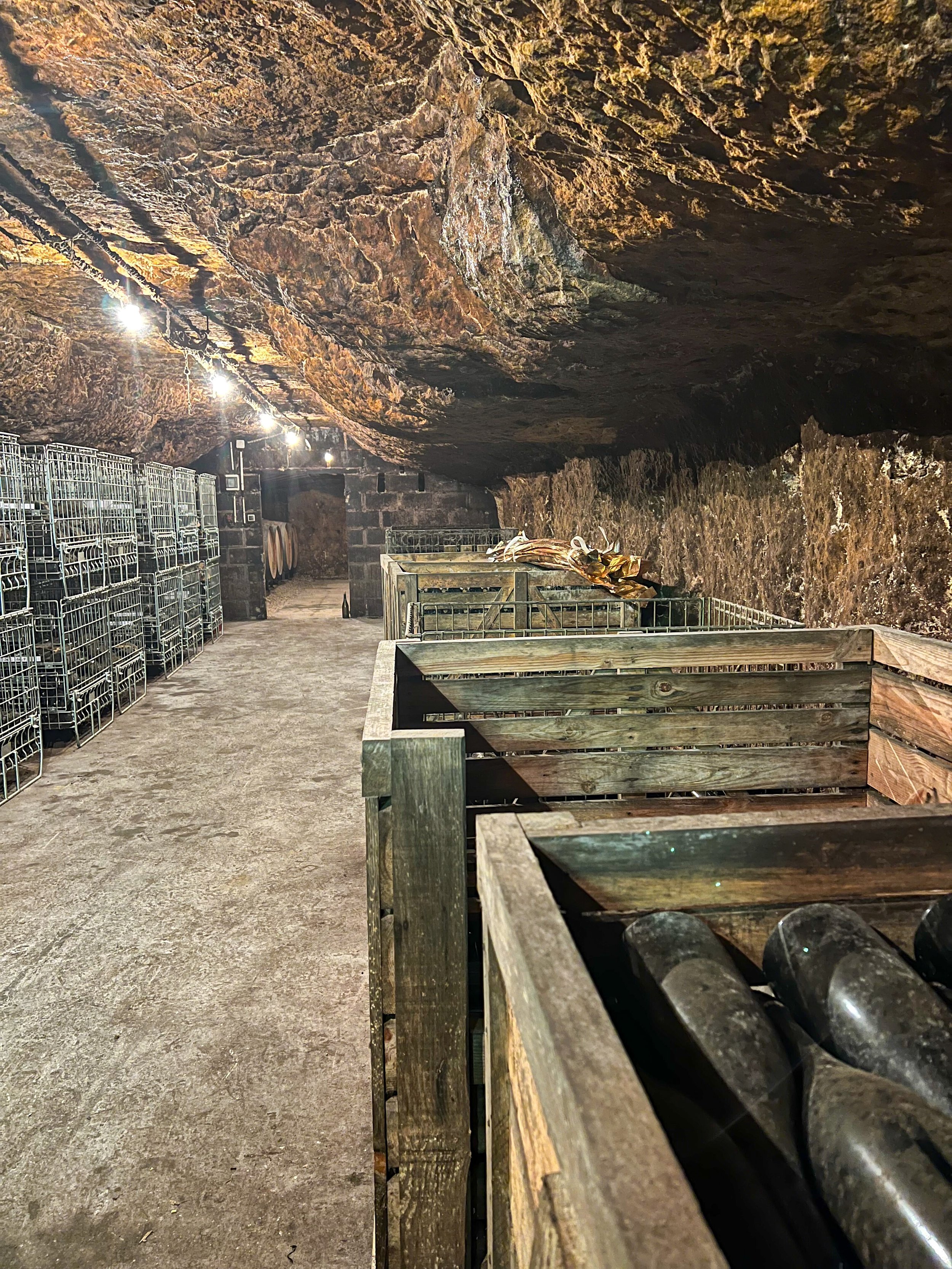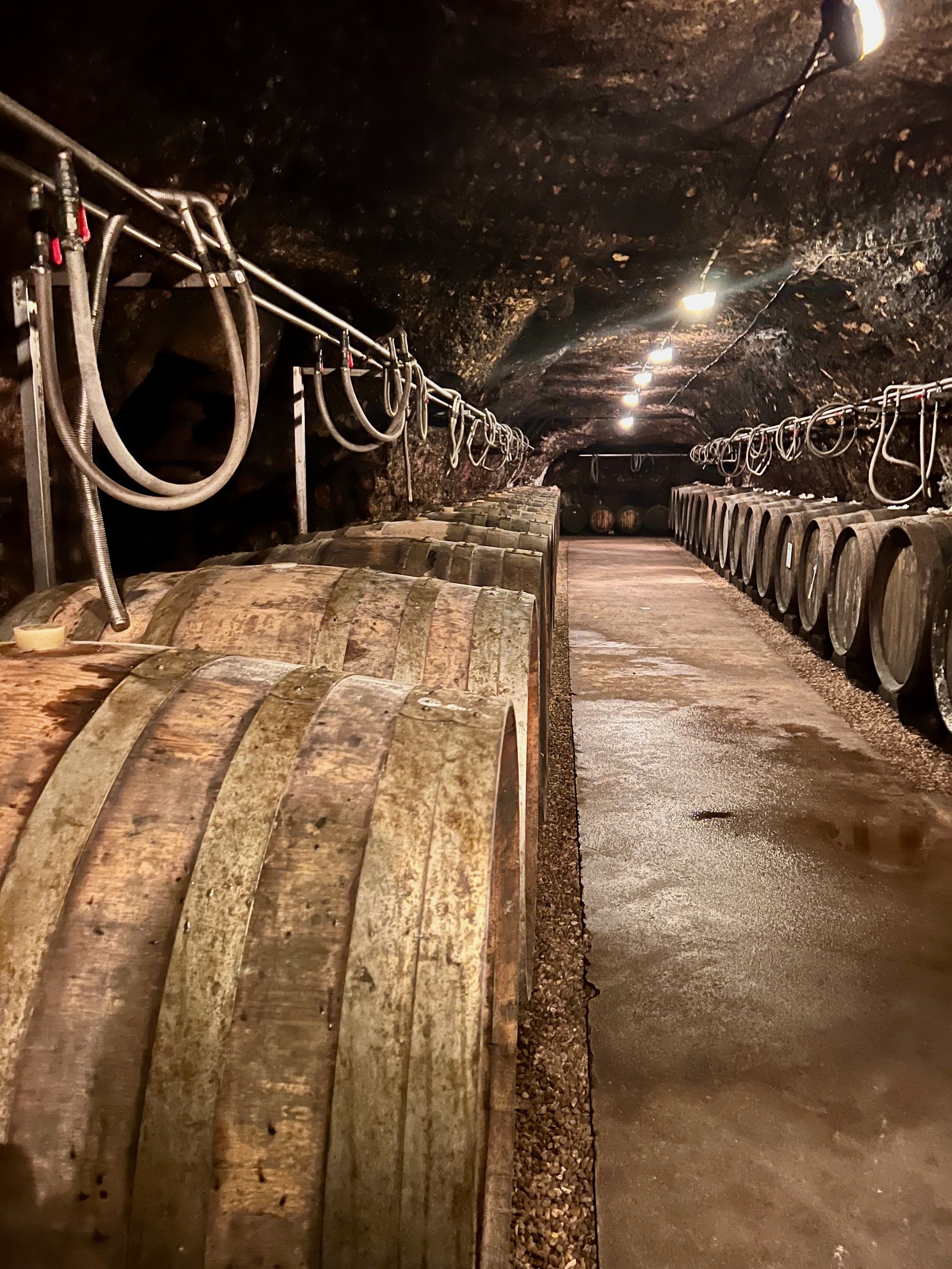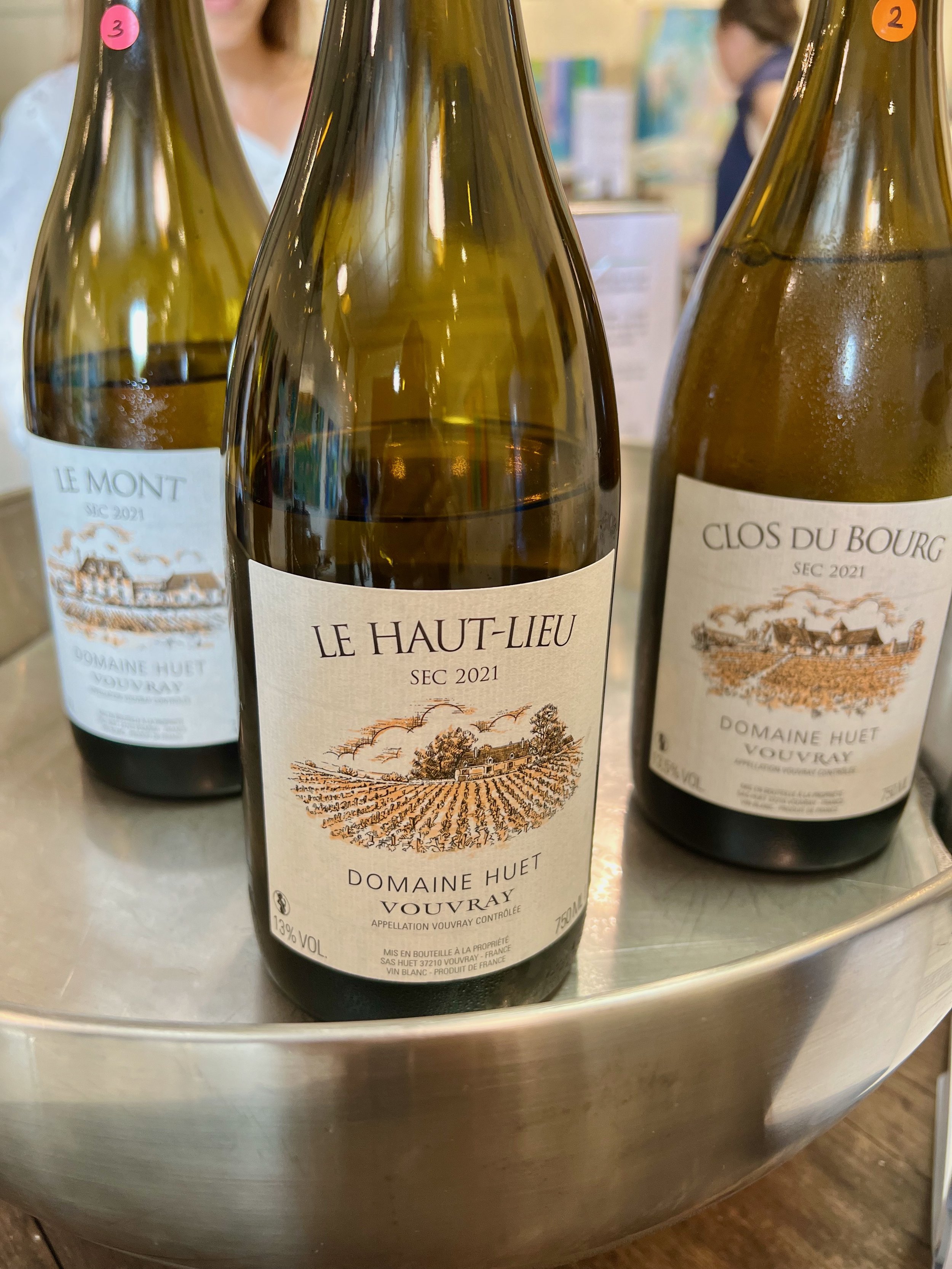Chenin Blanc - A Loire Valley Introduction
Why don't I drink more Chenin Blanc? Do you find yourself saying this after having that occasional glass; I did. After a lot of postponement, I was finally able to take a deep dive into this Loire Valley-originated grape to discover its personality. I'm excited to share my wine travel discoveries in hopes you'll indulge with me in drinking this often-overlooked white wine.
A bit of history: Chenin Blanc, is historically known as Pineau de la Loire, and has grown in the Loire Valley since the 9th century.
The Grape and Taste Profiles:
Before diving into the Loire Valley appellations that grow some of the best Chenin Blanc, let's talk about the grape itself.
High Acidity; In a dry wine, its acidity adds a refreshing taste with pronounced minerality. My palate gravitates to these characteristics, so if you feel the same, stay with me.
Its Versatility; This versatile grape can be vinified into any kind of wine, from teeth-rattlingly dry to full-bodied complex, to honeyed dessert sweet, to sparkling. Chenin Blanc is one of those remarkable grape varieties capable of making almost any kind of wine. It might be the only grape, apart from Riesling, that can be vinified in so many ways. With this, it also shares the same fate as Riesling, in that it can also be misunderstood because of its versatility. The complicating curve begs the question of dryness and sweetness.
Lean and Dry Chenin Blanc is tart, mineral-infused with pear, quince, chamomile, and ginger flavors. These are great for refreshing the palate, as an aperitif, or pairing with a seafood dish.
Dry Chenin Blanc aged in natural oak can tend to be more medium to full-bodied and complex. These would pair perfectly with a cream sauce like Beurre Blanc and mushrooms, which you find principally in Loire Valley cuisine. Another possibility is a creamy Risotto; I hope you are starting to see the picture.
Off-Dry (demi-sec) Chenin Blanc wines have a bit of residual sugar, which converts to flavors of ripe pear, jasmine, and honeycomb. These can cut through fatty foods (hello foie gras) and complement spicy dishes. I'm a big fan of pairing them with cheese or food versus drinking them standalone.
Sweet Chenin Blanc can mostly be found in two areas. The Coteaux du Layon region, which is near Savennières, or in Vouvray and will be labeled as "Moelleux" wines. These wines are made from late-harvest grapes and have ginger, tropical fruit, marmalade, and honeycomb notes. I know we use the term "sweet," but they aren't the sticky-syrupy sweet that may come to mind. They are lovely compliments to desserts.
Sparkling Chenin Blanc can range from dry (Brut) to sweet (Demi-Sec) styles and is labeled Crement de Loire. I am a HUGE fan of these crisp and inexpensive sparklers, a sunny afternoon party starter, or a go-to brunch staple.
Loire Valley Terroir:
Chenin Blanc is a blank slate that takes its properties from the soil. An early-budding and mid-ripening grape, the vine grows successfully in various soil types, including limestone, schist, sand, and clay, all of which are found in the Loire.
Let's explore three of Loire Valley's appellations to discover the differences and who to watch for when buying these wines. We’ll start in the West, about 50 miles from the mouth of the river, and travel East, staying in what they call the “middle” Loire.
Savennières (Anjou)
When considering the breadth of the Loire Valley, Savennières is a minuscule slice. Still, it encompasses two Grand Cru vineyards and is a powerhouse when discussing Chenin Blanc, making various styles and ageable wines.
Savennières appellation is part of the Anjou region, located 10 miles southwest of the historical town of Angers (a must-stop). It is a small appellation comprising 360 acres of vineyard and 36 winemakers, and the yields are minimal, one of the lowest in all of France. All this leads to wines that might be hard to find but worthy of the search.
The first uniqueness compared to other Loire Valley regions is the soil, which is purple and green schist. Schist both retains and reflects heat which stabilizes the vines and will also cause the roots to go deep to find the natural spring water that runs under these vineyards. On the way, the roots absorb lots of minerals and will tend to add a minerality note to the wine. It also reinforces the acidity in the grape. Great for Chenin, but not so good for Cabernet Franc, which is not allowed in this AOC (it's only Chenin Blanc).
The second distinction I found fascinating is the vineyards. Driving out of the city of Angers, we were commenting, "where are the vineyards?" You won't see acres and acres of open farmland; it's all contained in small parcels and surrounded by trees and gardens, just off the north shore of the Loire River. In the mid-1800s, wealthy Parisian families moved to this countryside, building 17 Chateaux and 17 parks. They created a clos, or an enclosed setting around their Chateaux, which contained a vineyard, along with gardens, orchards, farm animals, and perhaps a stream or small lake -- basically creating a natural ecosystem. This natural environment is what many biodynamic producers strive to achieve, yet here, it was established in the 1800s and thrives today. It's estimated that 80% of this area practices organic farming.
Producers to Seek Out:
This family vineyard is located at the Château des Vaults in Savennières, a Grand Cru of the Loire Valley. Women have owned this property since the end of the 18th century (quite unusual). Today Mrs. Evelyne de Pontbriand is the manager and winemaker of the estate and the sixth generation to carry on this tradition. They are certified biodynamic, and she focuses on an ecosystem of gardens and vineyards containing birds, botany, bees, butterflies, and bats, to name a few.
We tasted Sparkling Chenin, Dry Chenin, Natural Chenin, Off-dry Chenin, and a Cab Franc (a light-bodied red from Anjou). We brought home the Les Caillardières 2019 from 35-year-old-vines. It spent a year and a half on the lees in 420-liter oak barrels, medium-bodied, complex. A dry wine, expressing pear, honeysuckle, and cooked apple flavors with a light kiss of sweetness. The Jalousie comes from younger vines and spends less time on the lees. It is a bit crisper and mineral with citrus, grapefruit, and lime and finishes with saline.
If you find any of her wines, just buy them; you'll thank me later.
This Domain is run by leading biodynamic proponent Nicolas Joly, who has published several books on the topic. A 17-acre clos, initially planted by the Cistercian monks in the 12th century, it's one of the rare French monopoles, like Burgundy's Romanée-Conti. His non-interventionist approach to winemaking leads to a style of wine that is very distinctive; fuller-bodied, complex, and ageable. Joly insists that his wines improve for several days after they are opened and that bottles should be drunk over this timeframe.
If you want something unique that you can discuss with a group of wine nerds, this should be your hands-down wine choice. It wasn’t for my palate.
Others to look for:
Just next door to Coulée de Serrant, this winery is run by a mother-daughter team, Monique and Tessa. They are a dominant player in the Roche-aux-Moines Grand Cru of Savennières and make a bone-dry Chenin Blanc.
A historical estate with the 5th generation taking the reins and bringing fresh ideas.
Saumur
As we travel east, crossing the river a few times, you'll find the town and the region of Saumur, where the soil turns to limestone. It is this soil that gives the Chenin Blanc grape a bright acidity. Limestone is excellent for water retention, and vines are under less stress here. This characteristic makes the wine a bit juicier while showing an intriguing mineral salinity.
The town of Saumer is 30 miles upstream of Angers and is the Loire's equivalent of Reims in Epernay rolled into one. Miles of sparkling wine cellars are carved into the soft local cliffs of tuffeau stone. Winemakers here use barely ripe grapes to produce Saumur's outstanding sparkling wines. The history behind Crement de Loire is after WWI, the Champagne region could not produce enough to keep up with the demand. They found Chenin to be a great grape to make sparkling wine, and in 1936 the Appellation was started. If you want some great value sparkling wine, look no further. Many use the same methods as Champagne and blend vintages as well.
For Chenin Blanc Sparklers:
For Chenin Blanc Still:
Their vineyard 'Brézé ' was one of my favorites, bright with pronounced minerality. Brézé is a unique site due to its relatively high elevation and nuanced geological profile. There is a significant presence of tuffeau, (porous, chalky limestone) found all over this area.
This is another biodynamic producer who stands out in the region. A favorite of mine Clos de l’Echelier Blanc from sixty-year-old vines. Vibrant with stony minerality; it resembles an excellent Chablis.
Vouvray (Touraine)
Vouvray on the right bank of the Loire is upstream from the town of Tours. It is where Chenin Blanc is grown predominantly on clay (limestone-clay or siliceous-clay) soils. The complexity of the Chenin wine is perfectly expressed on these clay soils.
It is undoubtedly one of the most famous appellations of white Loire wines along with Sancerre, which we didn't make it to, but we were focused on Chenin! Chenin Blanc in this appellation comes in many variations, sparkling, dry, and off-dry to sweet wines. The white wines of Vouvray, dry or not, have an aging potential of 10, 20 years, and more.
The development of the Vouvray wine region is attributed to Saint Martin, who, according to a local legend, introduced winemaking in the Loire Valley. That was 1500 years ago!
Producers to Seek Out:
We spent time with Catherine Champalou, who, along with her husband Didier, began this adventure as a newly married couple in 1984. Her passion for the wine, and her pride for what they have created, shine through as she tells their story. She exudes love for her family, their workers, and wine partners - you could not meet a nicer person.
Catherine likes a good Champagne, so we started with a Brut sparkler blended from 3 vintages. We followed with five Chenin's ranging from bone-dry, dry, semi-sec, sweat, to an aged 2003. Wow!
The 2020 Vouvray became a “suitcase” wine. Refreshing with a stony minerality, balanced with luscious, almost honeyed fruit and flowery notes. It makes for a great apéritif or easy pairing with all sorts of dishes.
This Domain is an iconic Vouvray producer and lauded for making great, age-worthy Chenin Blanc. This includes what is referred to as Moelleux, which is more on the sweeter side, but it’s not discussed using this term. It is more about managing the acidity of Chenin. The mouth has a round, soft, smooth, and velvety character.
We tasted from three sparklers, four dry Chenin, three demi-secs, and three Moelleux. Obviously too many to bring home or write about. You really can’t go wrong, so find one, and enjoy. The one who made it into our suitcase, Le Mont Sec 2021
In Summary:
I hope this gives you a better idea of Chenin Blanc and the three major Loire Valley appellations which produce excellent examples. Try one from each area to explore the differences the terroir can express. You won’t go wrong with any of the producers I’ve included. Drop me a note and share your thoughts if you indulge in one.

